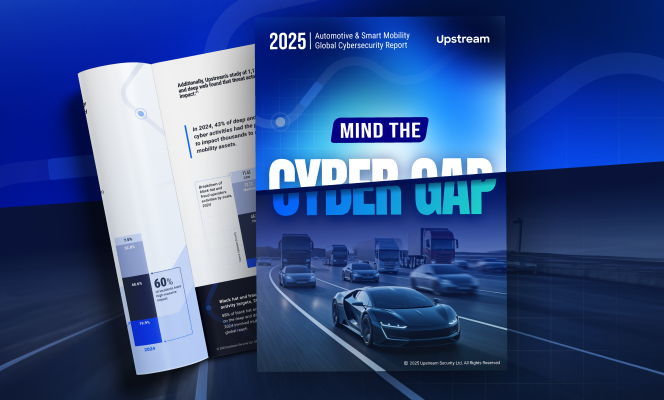

When You Can Finally Talk With Your Vehicle Data: LLMs in Automotive
AI has moved from proof-of-concept to boardroom priority across the automotive sector. Every OEM today is investing in ways to make smarter decisions from the enormous amounts of data generated by connected vehicles. Yet despite the energy and investment, progress often stalls at the same obstacle: the data itself.
That reality framed Upstream’s recent live webinar session, “LLMs in Automotive: Turning Hype into Scalable Business Value.” Hosted by automotive industry lead Jennifer Tisdale with Sarit Kozokin, VP of Product Management, and Elad Tsur, Data Science & Engineering Group Manager, the discussion unpacked what’s really slowing down the automotive industry and where large language models can help. The takeaway wasn’t a sales pitch or a new buzzword, but a candid look at how to make AI actually work in complex automotive environments.
The Vehicle Data Challenge Nobody Escapes
Vehicles today generate vast amounts of information from ECUs, telematics, apps, cloud services, and dealer systems. Each of these sources operates on different schemas, different timelines, and different ownership structures. The result: oceans of raw data with no common language.
For OEMs, the challenge isn’t collecting data, it’s connecting the dots. “When the data doesn’t tell a coherent story,” Kozokin noted on the webinar, “even the best models can only guess.” Most teams know this pain. In most cases, the different automotive departments each run their own analytics, but without a shared foundation, insights stay locked in silos.
That’s where AI is often misunderstood. Machine learning models or GenAI capabilities alone can’t fix disorganized data. They depend on it. The real opportunity lies in contextualizing that data by building the bridge between raw signals and usable intelligence.
Where LLMs Fit into the Automotive Ecosystem
For years, the automotive conversation around analytics focused on predictive modeling: detecting anomalies, forecasting failures, and automating responses. What’s changing now is the role of large language models as an interface between people and data.
Rather than simply feeding dashboards or reports, LLMs make it possible to talk to data and even with data in a more advanced, conversational style. They explain anomalies, surface hidden relationships, and translate machine outputs into human-readable context. That means anyone relying on data for decision making can query patterns in real time using natural language, like “Show me emerging DTC trends for this month,” and immediately visualize what’s happening across a fleet. To take this to the next level, one can hold an interactive conversation with their data to increase productivity and efficiency.
As Tsur described on the webinar, this is less about replacing analysts and more about amplification. ML models do the heavy lifting of detection; GenAI makes those results usable. They close the loop between insight and action by enabling a conversation rather than a one-way readout.
Build, Buy, or Blend? What’s the Right Approach to Implementing the Right AI Capabilities?
Another thread that resonated with the audience was the ongoing debate around whether to build AI capabilities internally or partner with established vendors. Each path has trade-offs. Building provides control and customization but consumes resources and time. Buying offers speed and maturity but can lack the nuances of in-house data and processes.
According to Kozokin, most OEMs will ultimately land on a hybrid approach: internal data ownership combined with external domain expertise. The blend allows teams to move faster while retaining strategic control. Whatever the model, one principle remains critical: trust. AI must be explainable, visual, and interactive if engineers are to rely on it in production environments.
From Models to Meaning: Building the Right Automotive AI Systems
The discussion also pointed to what’s ahead for data-driven teams: conversational analytics. LLM-powered tools like Upstream’s OceanAI show how anyone who needs to see and understand the data can query their datasets directly, visualize patterns, and even co-create new detectors through guided steps. This kind of human-in-the-loop collaboration redefines how analytics are built: faster, more intuitive, and far more scalable.
But as the panelists emphasized, none of this works without a solid, scalable, and AI-ready data infrastructure. Before AI can transform decision-making, the data must be unified, enriched, and structured so the models can learn from it. Context remains the real differentiator.
In the end, AI in automotive isn’t about replacing experts; it’s about giving them a way to listen to what their data has been trying to say all along. As Tisdale concluded, “AI is evolving fast. The key is making it work for your business, not the other way around.”
Watch the full session on demand to hear the complete discussion on LLMs in automotive
and see practical examples of how OEMs are using AI and LLMs to accelerate real-world
decisions across quality, cybersecurity, and connected services.


